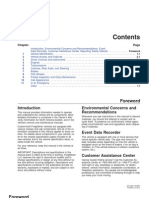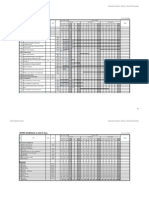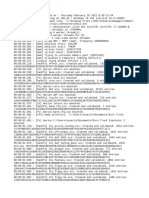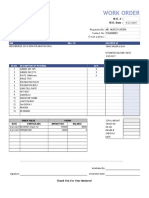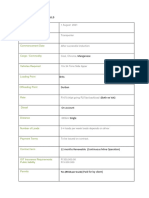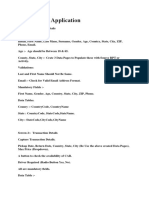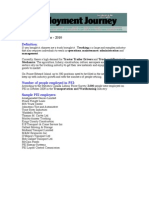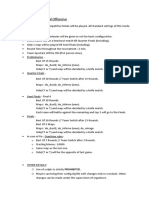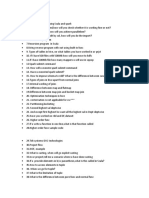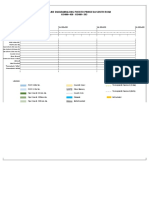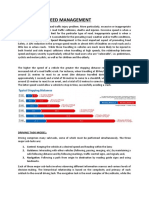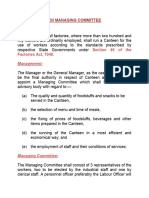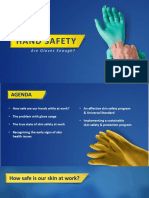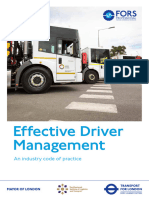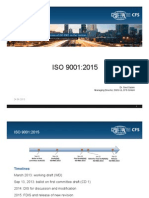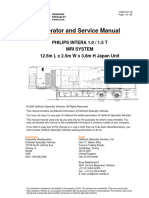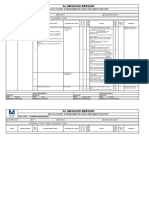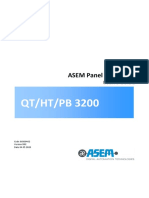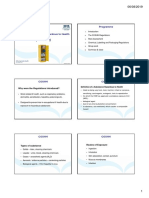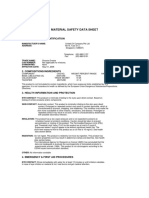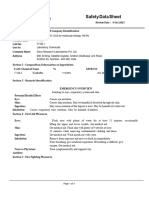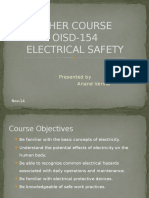DRIVER SELECTION AND DRIVER SAFETY
PROGRAM
Drivers of Hazardous Goods Trucks at this Job needs to deliver gasoline, fuel oil, liquefied petroleum
gas, lubricant oil etc. to customers. His main work includes positioning of the truck to filling rack,
opens valves, start pumps, connect the respective hoses to tank, records the quantity delivered,
maintain the check list and drive the truck to the respective outlet. The individual should have a
good sense of responsibility, must be alert at all times, ability to work independently, stress
management skills and should be free from any bad habits while transporting hazardous goods.
Hence careful driver selection is important so ensure that appropriate procedures are in place. With
appropriate driver selection, the provision of instruction, information and training and adequate
supervision, workplace transport accidents and incidents can be significantly reduced. When
selecting people to drive workplace vehicles:
Select drivers who have the correct safe attitude to workplace transport and have the ability
to perform the job in a responsible and competent manner. Appropriate selection will
require an evaluation of age, experience, driving record and maturity, as well as attitude.
The correct attitude includes knowing and understanding how to: Keep oneself updated
with the new vehicle technologies and functionalities; gain knowledge/ experience from
working on different routes; work in a team in order to achieve better results; identify and
clarify work roles within a team; communicate and cooperate with others in the team for
better results and seek assistance from fellow team members.
Consider the employee’s physical fitness, such as health, eyesight, hearing and mental ability
to carry out the job. Where possible, match the particular vehicle requirements, the task and
situation with the driver’s fitness and capabilities. Drivers who are unfit due to drugs or
alcohol to drive a vehicle should not be allowed to drive the Hazardous Goods Carriage. The
driver should be fit enough to ensure safe unloading of the Hazardous Goods and drives
back the empty truck to the loading centre.
If the driver has previous experience, assess them to ensure that they are competent. The
performance criteria of the driver with regard to the handling different fire fighting in
emergencies or electrical fire en route. The driver is capable of reporting all incidents to the
authority concerned. His calibre in handling spills and responding to the spills are up to the
mark.
The drivers’ competence should be assessed to drive the hazardous goods vehicle and then
authorise them for such vehicle so as to match their competence. Their knowledge of
Defensive Driving techniques, Journey Management techniques, Dealing with Distraction,
Alertness & Fatigue Management shall be assessed for the safe transportation of hazardous
goods.
� Carry out background checks; for instance, check the employee’s driving licence background.
Ensure that driver’s licenses or certificates are appropriate for the vehicles they are driving.
The driver should be able to know and understand how to resolve conflict while dealing with
public and how to learn from past mistakes to resolve technical and nontechnical problems.
DRIVER SAFETY PROGRAM
The Components of Driver Safety Program:
1. Driver selection
2. Driver evaluation
3. Demonstrating management support
4. Written policies and programs
5. Orientation, on-boarding, and training programs
6. Process for incident reporting and
7. Protocols for inspections and maintenance
1. Driver Seletion: The essential criteria for the driver selection are-
Correct Safe Attitude;
Physical Fitness;
Previous Experience;
Driving Competence; and
Background Checks.
2. Driver Evaluation: The suitability of driver capabilities could be evaluated by conducting
driving test as well as driver ride-along evaluations and testing the knowledge in traffic
rules and hazardous goods transportation norms. The driving restrictions such as
corrective lenses, no night time driving, allergic to hazardous chemicals, etc. should be
taken into account for consideration. Drivers with more than 35 years would be taken as
pre-requisite in view of their maturity. Drivers having a poor record of 3 or more
violations in the last three years should be disqualified.
3. Demonstrating Management Support: The active top management support can b
established through-
A Safety policy statement written by top management that should be distributed to all
employees with a signed acknowledgement and placed in the employee file. The copy of
Safety Policy should also be posted in conspicuous place near the main transport office.
An individual with the required competency is assigned to oversee driver safety.
Standard Operating Procedures that are formulated in step-by step clear instructions writing
shall be established and consistently enforced.
The drivers shall be held responsible for their driving and journey management with the
utilization of GPS Technology and adopting incentive scheme for good driving performance.
Safety should be made as a recurring topic in driver meetings.
Safety rules are routinely reviewed and updated as needed.
� 4. Written Policies and Programs: In today’s business environment, you can proactively
serve your organization by documenting how you expect your business to be run. This
can include:
A written vehicle/driver safety program: Your program includes provisions for 100% seat belt
use, rules about distracted driving, and reporting any unexpected violations.
Your rules and regulations are written in a clear, concise manner with sufficient detail.
Rules and regulations are readily available and easy to obtain in an organized, neat, and easy
to use format.
Everyone thoroughly reviews the rules and is rigorously tested on them.
The organization effectively communicates any updates.
Rules are rigorously enforced.
5. Orientation, on-boarding and Training Programs: Training presents some great
opportunities for better management of the driving exposures of the Hazardous Goods
Transportation drivers. The training should be recurring and a variety of methods should
be applied to communicate safety instructions to the drivers. Thorough training sessions
such as orientation and annual refresher training that is stipulated in the Central Motor
Vehicles Act and Rules should follow a checklist to assure all topics are consistently
covered. Other proactive practices that might be utilized to help maximize training
efforts could include:
Assigning a driver Mentor who is trained to be a Mentor.
Including in-vehicle training.
Utilizing a monitored probationary period for the newly appointed drivers.
6. Process for Incident Reporting: It is important that drivers know what to do and what
not to do in the event of an accident. An improper statement immediately following an
accident could make your organization smart in communicating to the concerned
authorities within the stipulated time schedule. It is important you establish procedures
that inform the drivers how to properly respond in the event of an accident.
7. Protocols for Inspection and Maintenance: “What gets inspected gets dealt with” is a
management saying often stated and one that may serve the organization well. Properly
inspected and maintained vehicles have a much greater chance of operating properly
than vehicles that are neglected. “What gets inspected gets dealt with” is a management
saying often stated and one that may serve your organization well. Properly inspected
and maintained vehicles have a much greater chance of operating properly than vehicles
that are neglected.







